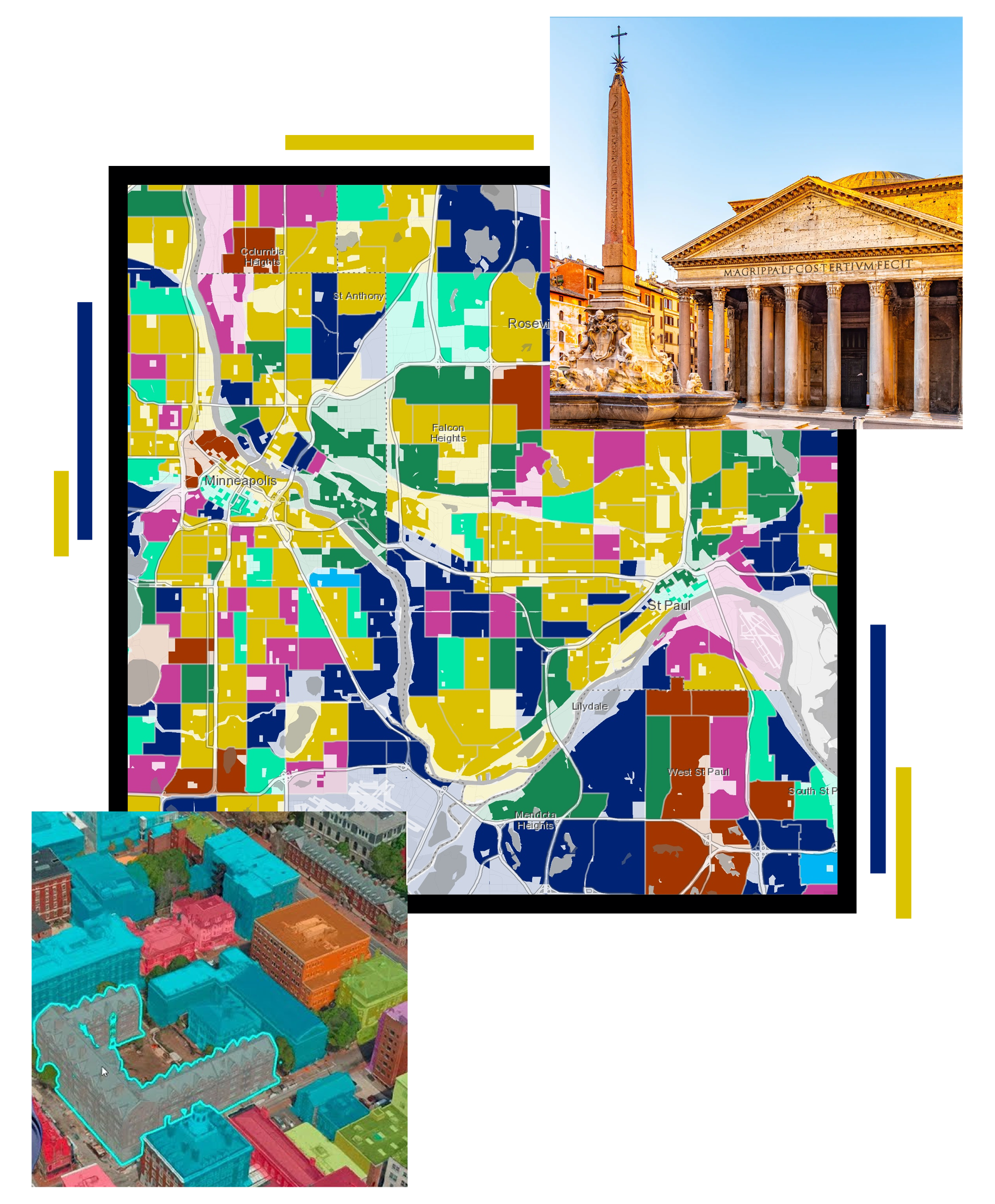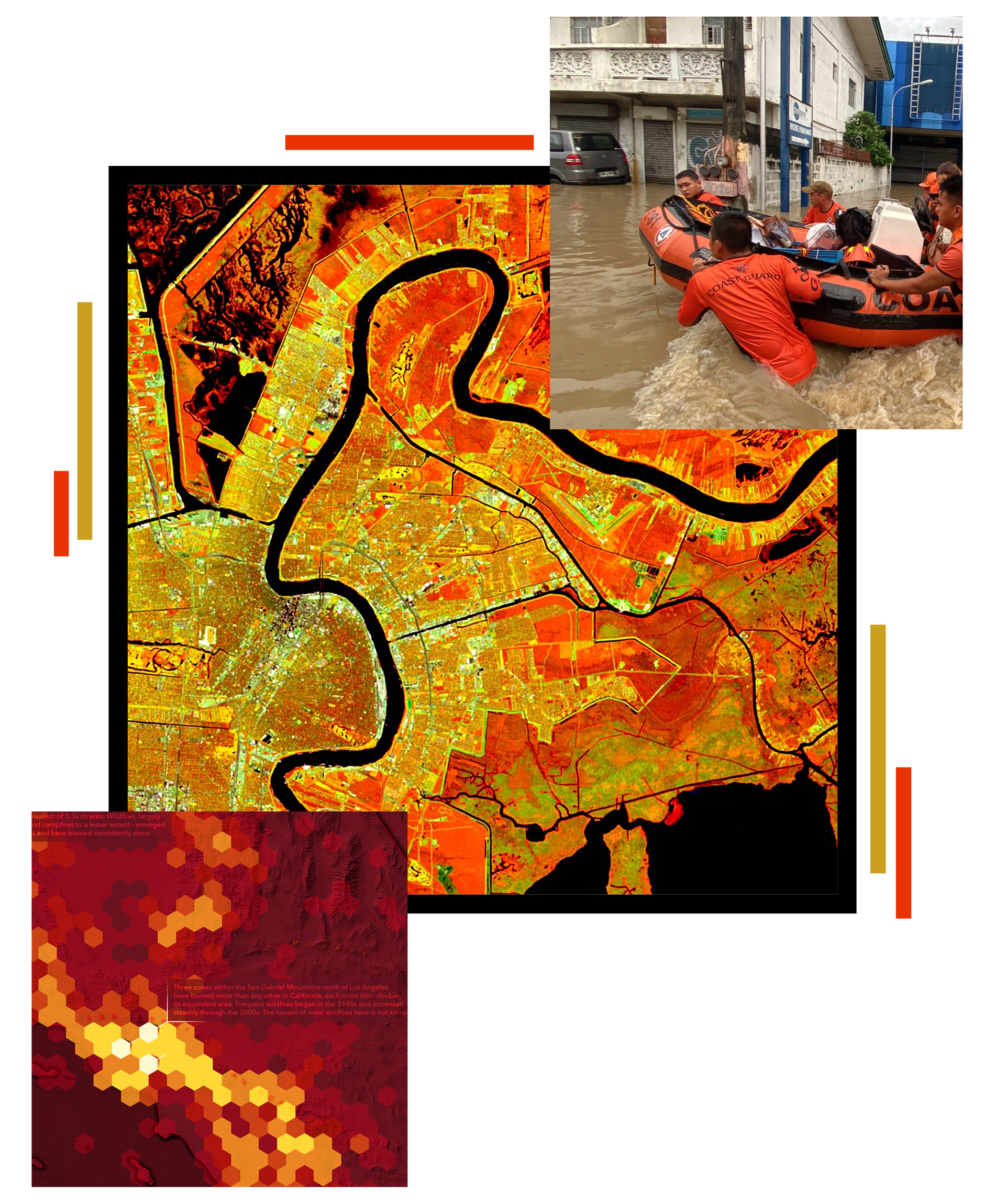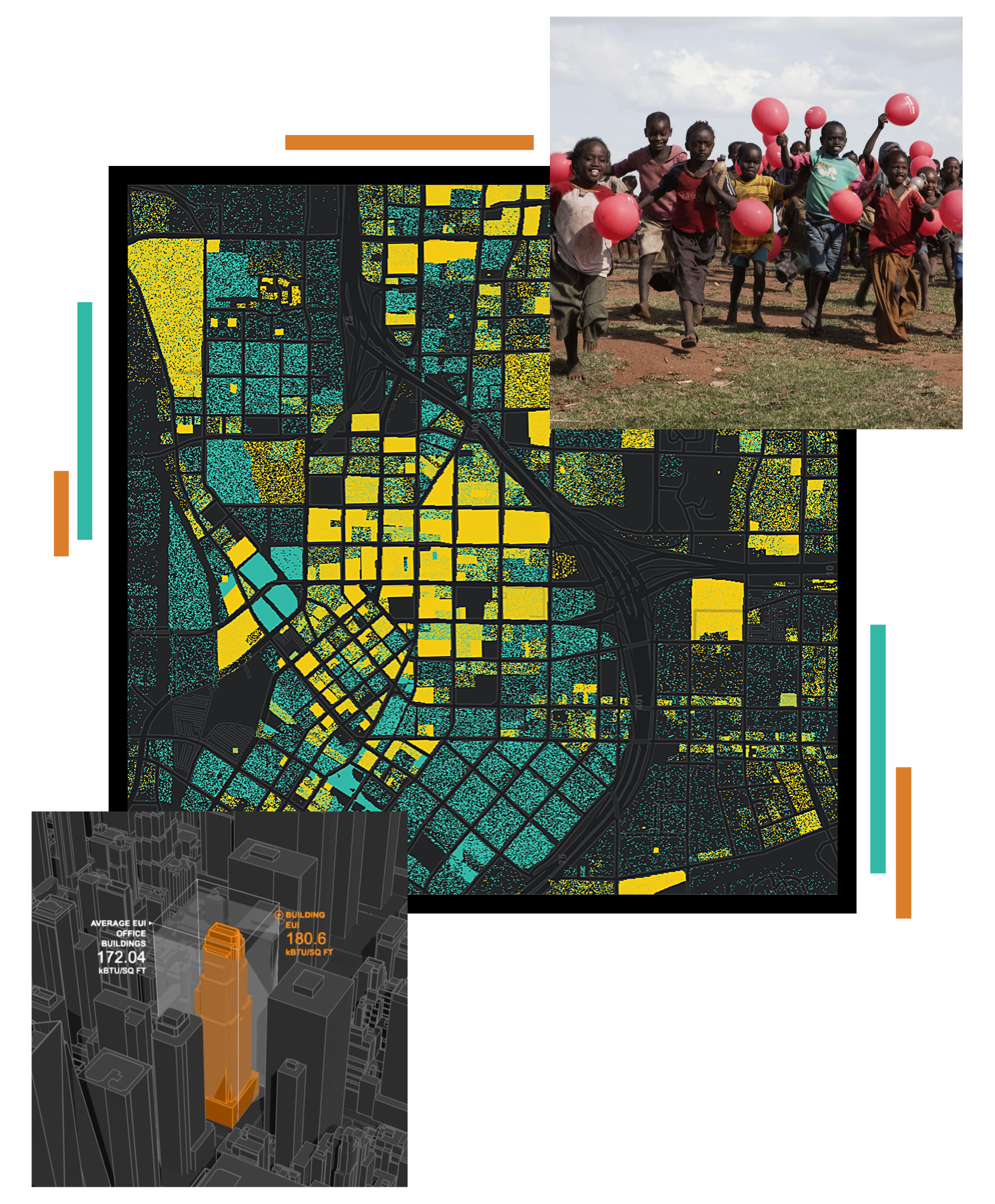
GIS for National Statistics
GIS strengthens statistical systems by integrating location-based digital tools, improving the accuracy of data collection, analysis, and dissemination in the pre-enumeration, enumeration, and post-enumeration phases.
Creating a geodatabase in a GIS environment involves setting up a structured repository for spatial data, ensuring efficient storage, and management. Developing tools for real-time monitoring enables tracking and reporting of changes in spatial data as they occur, using technologies like GPS and IoT to provide timely information for decision-making. Tools for data visualization transform raw spatial data into comprehensible visual formats, helping users identify patterns and trends. Implementing web applications for data dissemination involves creating online platforms that allow users to access, share, and interact with spatial data, enhancing the reach and usability of geographic information.

GIS for International Cooperation and MEALS
Optimizing limited resources is key in development contexts. We support development players by leveraging spatial data for decision-making.
Integrated Web GIS tools to support planning and monitoring of organizational processes and the project life cycle.
Measuring changes through indicators leads to gains in accuracy, as it provides clear metrics for assessing performance. Evaluating impact enhances credibility by demonstrating a commitment to monitoring progress and adapting as needed. Demonstrating results increases accountability, showing stakeholders tangible outcomes of efforts. Telling success stories fosters a sense of community by sharing positive impacts and inspiring others. Understanding for improvement boosts effectiveness, enabling continuous refinement of strategies and practices based on insights gained.
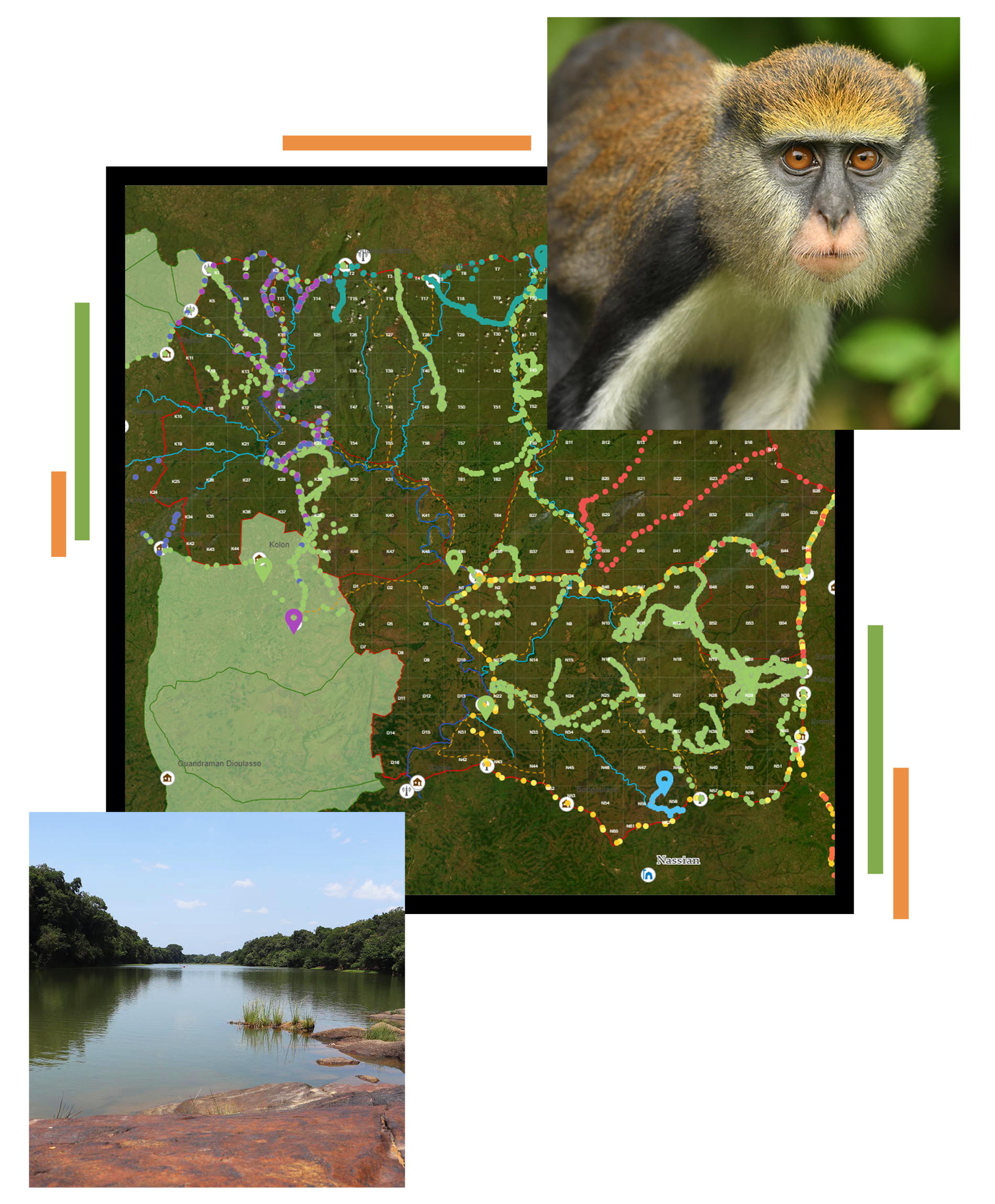
GIS for Conservation
Tools for park surveillance and conservation, to empower managers with information on both human safety and biomonitoring of natural resources.
A robust data ingestion solution integrates geographic data, IoT, and GPS inputs, ensuring effective data collection from various sources. Security is enhanced through a geo-localized view of agents, providing precise location tracking and improving operational safety. Remote monitoring of infrastructure allows for efficient management and maintenance of assets, while biomonitoring focuses on tracking flora and fauna to support environmental conservation efforts. A GIS-based decision support system synthesizes this data, offering valuable insights and aiding in informed decision-making across diverse applications.
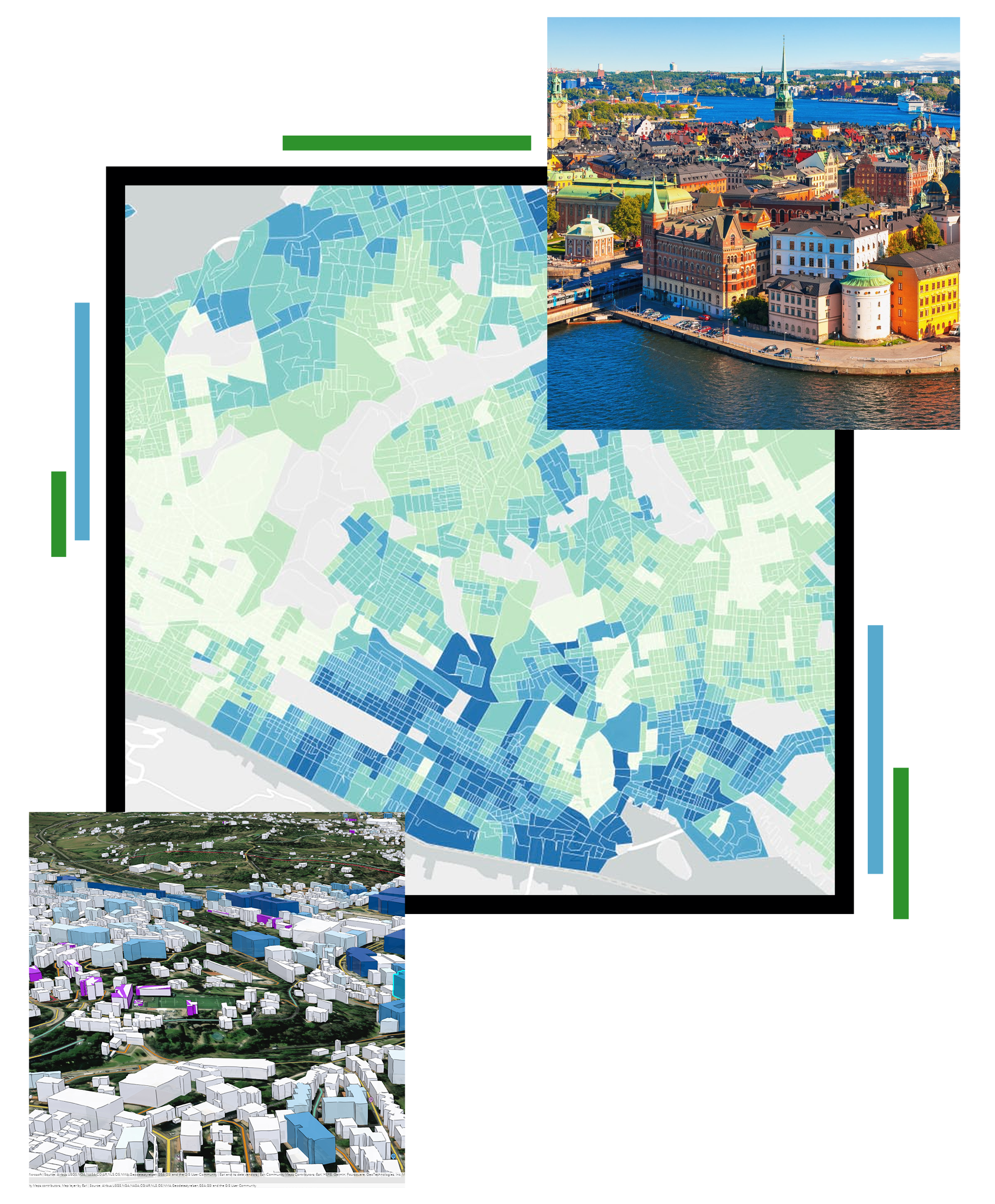
GIS for Urban Regeneration
Urban regeneration is the process of revitalizing and renewing urban areas that have experienced decline, decay, or underutilization, with the goal of improving physical, economic, and social conditions for residents. This process typically involves redeveloping infrastructure, introducing new housing and commercial spaces, and enhancing public spaces and services. By focusing on sustainability and inclusivity, urban regeneration projects aim to create vibrant, resilient communities that offer improved living conditions, greater opportunities, and a higher quality of life for all residents.

